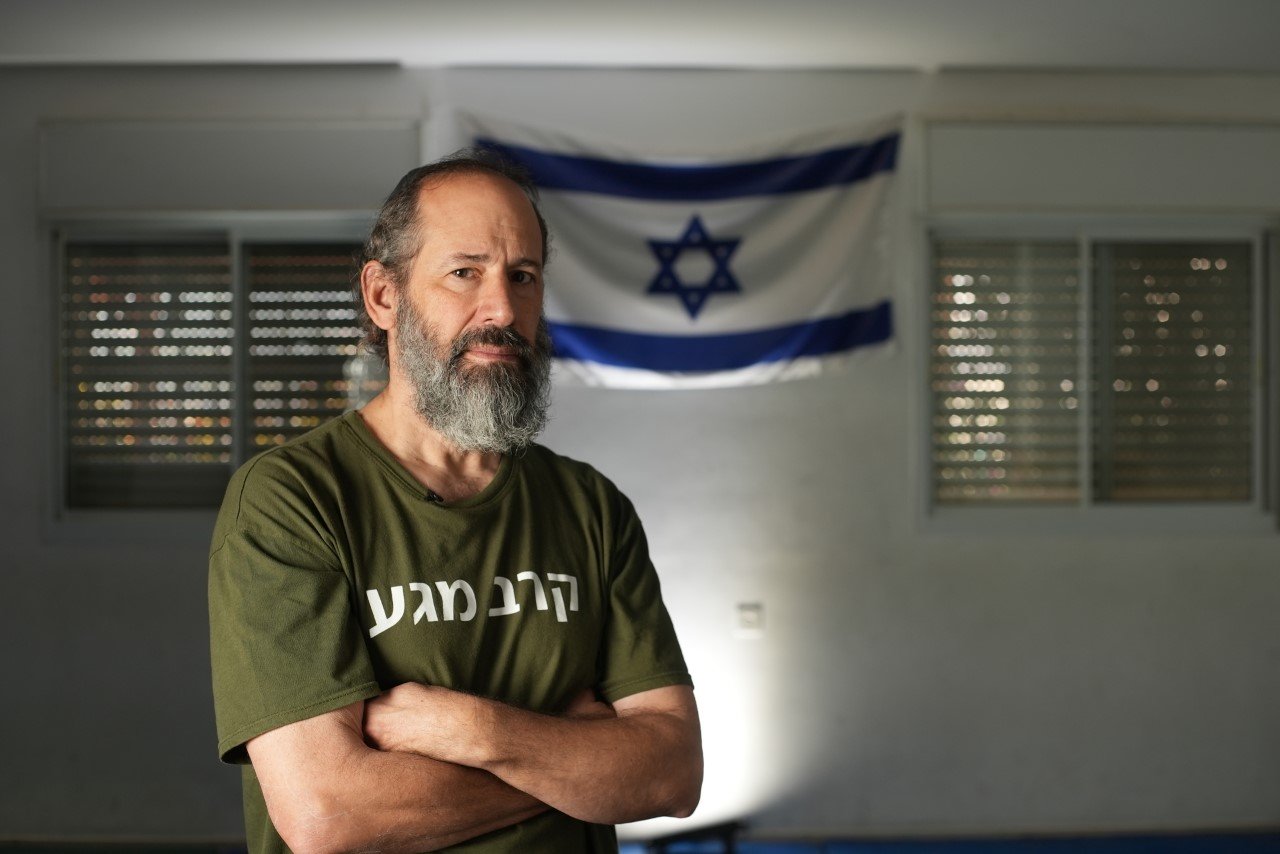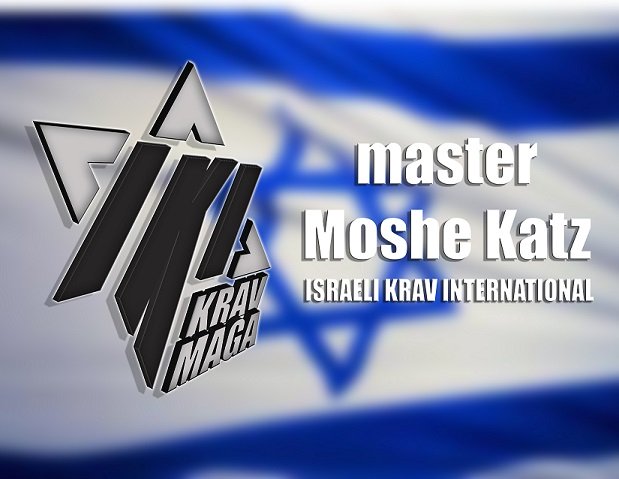- Home
- Krav Maga Blog
- Krav Instructors
- Train in Israel
- Tour Train Israel
- Krav Shop
- DVD
- Kickboxing
- IKI Near Me
- Seminars
- IKI Membership
- On-Line Training
- Krav Maga Training
- Testimonials
- History Krav Maga
- Instructors Page
- Past Blogs
- Spanish
- Italian
- Certification
- Contact
- Holland Seminar
- Vienna Seminar
- Poland Seminar
- Italy Seminar
- Belt Requirements
Useless Techniques
BY MOSHE KATZ
CEO
ISRAELI KRAV INTERNATIONAL
March 24, 2024, Israel
Over my many years of studying and training in martial arts I have come across countless useless techniques. But what I wish to stress here is that all martial arts techniques are useless, unless...unless you train in another realm, unless you train your mind.
The great fallacy of martial arts training, and the great failure of nearly all dojos/training halls, is that the miss the key elements of self-defense. The analogy I like to use is the expert electrician with a full toolbox, but the toolbox is locked, and the key is not to be found. Of what use is the toolbox without a key? Answer: No use at all. Of what use is the electrician without his tools? Answer: None at all. (although he can possibly offer some advice, but again, I am just using this as an analogy, don't get caught up with the details).
A martial artist has many tools. He has trained for many years, and he is highly skilled, but...
Let us look at the martial art of Iaido. Iaido is a Japanese martial art that emphasizes being aware and capable of quickly drawing the sword and responding to sudden attacks. Iaido practitioners train heavily in the movements of drawing the sword from its scabbard, striking an opponent and replacing the sword in the scabbard.
Let us think about that for a moment.
I recall watching such a performance, I have to admit that I was not only bored but baffled. So much time was spent drawing the sword and returning it to the scabbard. But there was no action, there was no fighting! I was confused. The problem was that at the time I did not understand the purpose of this art and those movements. Now I understand that they were teaching the most crucial aspect of self-defense: Being able to deploy your weapon when you need it, being able to open your toolbox when you need it, being able to access your skills, your highly trained martial arts skills, in time to use them. For without this, all martial arts are utterly useless.
I have seen terrorist attacks where people (the defenders) armed with a handgun by their side struggled to get the gun out of their holsters, thus wasting valuable seconds that could mean the difference between life and death. Thus the "boring" Iaido training; learn how to draw your weapon In Time.
In the case of martial artists, our weapons are our bodies but how does this apply to us? How can we "draw our body" to respond to a threat?
Unable to deploy those great fighting skills
The key problem here is that although we may have an impressive set of tools, we might have formidable skills, those skills will not likely come into play. Even the most impressive self-defense systems, even a system that if used would be devastating to the opponent, will never become a factor because the practitioners will be unable to deploy those great fighting skills in time to make a difference. Here is the problem; we train to develop great fighting skills, but we do not train enough on the means to deploy them in a real situation. This falls mostly into the non-physical domain, the mental psychological domain, the "less exciting" part of training.
When speaking with survivors of terrorist attacks we often hear the following words, "It came out of nowhere, I was completely overwhelmed". I have heard these words spoken by men who were veterans of wars, men who lead troops into combat, but on the streets of Jerusalem they were attacked by teenagers, even girls of 14, and they were overwhelmed. Why? Why is it that we hear, "It all happened so fast, there was no time to respond, to do anything."
Why? It is because we trained dojo style, we trained techniques, but that is only half the equation, or less.
How can we change this? Here are two stories.
Soldiers were in a booth watching monitors. They spotted an Arab walking around nervously, he kept touching something on his right side, as if to make sure and confirm that "it is still there". They suspected a knife attack was about to take place. They caught him by surprise, took him to the ground and sure enough there was a knife in his pocket. He confessed to have hoped to kill a few soldiers. I know the story because my nephew was one of those soldiers.
Next story. A soldier is standing in line to buy food. A young man is walking around, he is an Arab, he has his right hand in his pocket, but his left hand is free. (Always watch the hands, it is the hands that will kill you). We are in a state of war and our enemies have encouraged all Arabs to attack whenever and however they can. And yet, no one seems to notice this guy. The young Arab pulls out the knife and stabs the soldier in the neck. The soldier begins to fight back. The Arab grabs his neck and tries to stab the soldier again. The soldier fights bravely and takes the terrorist to the ground. Another Israeli helps keep the man down. The soldier pulls out his gun. The Arab breaks free, the knife still in his hand, and plunges towards the soldier but thankfully the soldier is able to shoot him dead before more harm is done. Four hours later the soldier dies from his wounds.
How does this story differ from the first and what can we learn? In the first story the soldiers were looking for signs of a potential attack, and they found them. Thus, they were able to deploy their skills and neutralize the threat. In the second case everyone was distracted by lunch and their cell phones, no one detected the signs, and thus, when the attack happened there was no time to respond effectively. The key is not only in having fighting skills but in detecting the threat in time to deploy those skills, that is our task.
When you are on patrol, you are looking for signs, when you are out for lunch, you are not. We need to train to be looking for signs. We need to learn to spot danger while there is still time to respond. The best skills in the world are of no use if not deployed on time. It is like a plane being shot down before it drops its deadly bombs. It is all a waste.
The attack begins before the attack, it begins with what Gavin De Becker calls the "Moment of Commitment", the moment that the attacker makes a movement from which he cannot easily retreat. In training this is easy to detect, as we are in a Krav Maga class, we expect it, we know it is coming. In fact, it is too easy. It is too easy because we are in class, it is Knife Attack class, so of course we are expecting a knife attack. But we are fooling ourselves. We are not training correctly; we will not be ready for a real knife attack. We have to train to deal with surprise, we have to know how to deploy our weapons when we are surprised, we need to learn how to deal with the chaos of the unknown. We have to learn what kind of techniques will work under the pressure of a real attack, the fear, the shock, the confusion. We cannot expect to look like the guys in the martial arts movies. We need to adjust for reality.
Most martial arts will fail, not because their techniques are bad but because they cannot deploy them on time to be of any value. We must correct this problem if we wish to improve our chances of survival.

Moshe Katz, 7th dan Black Belt, Israeli Krav Maga. Certified by Wingate Institute. Member Black Belt hall of fame, USA and Europe.
Understand the Israeli Fighting Mentality - Israel a Nation of Warriors by Moshe Katz

What is the cultural background of Krav Maga? What makes it unique? What makes the Israeli military so effective? Why are Israeli security systems used all over the world?
What are the Biblical origins of Krav Maga and who was the first Krav Maga instructor?
What weapons and military strategies did our Biblical ancestors use?
How has Krav Maga developed in Israel and what are its goals?
All that and more in this unique book.
Start Your REAL Training TODAY
Or is someone coming to save you?
IKI Krav Maga online distance training - Leading to ranks and certification.
Tour and Train Israel Experience
Personal Training - If you are interested in personal Krav Maga training please contact us on the form below.
